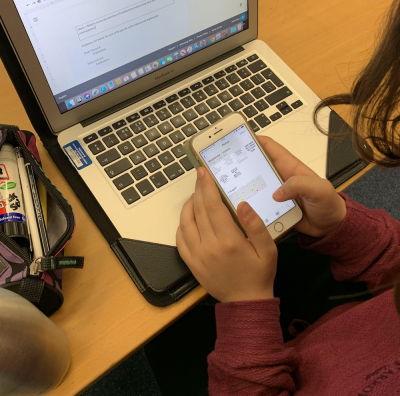
Currently, ASL’s mobile phone policy in the classroom provides teachers with the choice of whether to allow mobile phones for educational purposes. The policy was based on several studies that showed that mobile phones can affect how people perceive others. However, according to a poll taken by The Scroll, students have generally disagreed with this given how phones are ever-present in their everyday lives. Nevertheless, phones should not be used in school since they are widely unpopular with teachers and can change how students interact.
While it would be nice to have our phones in class, research indicates that phones affect how people perceive others. In a study published by The Journal of Social and Personal Relationships, researchers found that the presence of a mobile phone can decrease conversation quality. Participants in the study were paired up with a stranger to have a personal conversation. The participants were divided into two groups. Those who had a conversation with their phone close by measured less empathy for and trust in their partner than those without a phone present.
Research consultants at the International Telecommunications Union (ITU) infer that since phones provide a wide ranging social network, it could potentially distract people from the present.
Additionally, a poll taken by The Scroll in the 2017-2018 school year showed that 66 percent of teachers and students thought that phones should not be allowed in the classroom. “I am astonished how students are properly addicted to phones and don’t see how to manage relationships….. without tech,” Ms. Erica Jones, the middle school assistant principal said “The policy is informed by research and experience particularly in situations when teachers…… allow students to use their phones.” Ms. Jones said.
On the other hand, as previously stated from evidence pulled from a poll conducted by The Scroll, a bit over 30 percent of students think phones can be useful in the classroom. For example, students need to take photos for assignments around the school.
However, according to Ms. Jones, students can use phones if given the teacher’s permission. Some arguments are much weaker – students who are concerned they will not be able to contact their guardians in case of an emergency are covered since the middle school office always has its phones open for the entirety of the middle school. If guardians are not picking up after repeated attempts to contact them, students are allowed to use their phone to call a guardian.
The purpose of a school is to provide a positive environment that supports the students and gives them skills for the years to come. There’s no doubt that we get distracted by our phones, so if we allow them in class, how can we learn to be our best selves and make an effective learning environment for ourselves and others?
